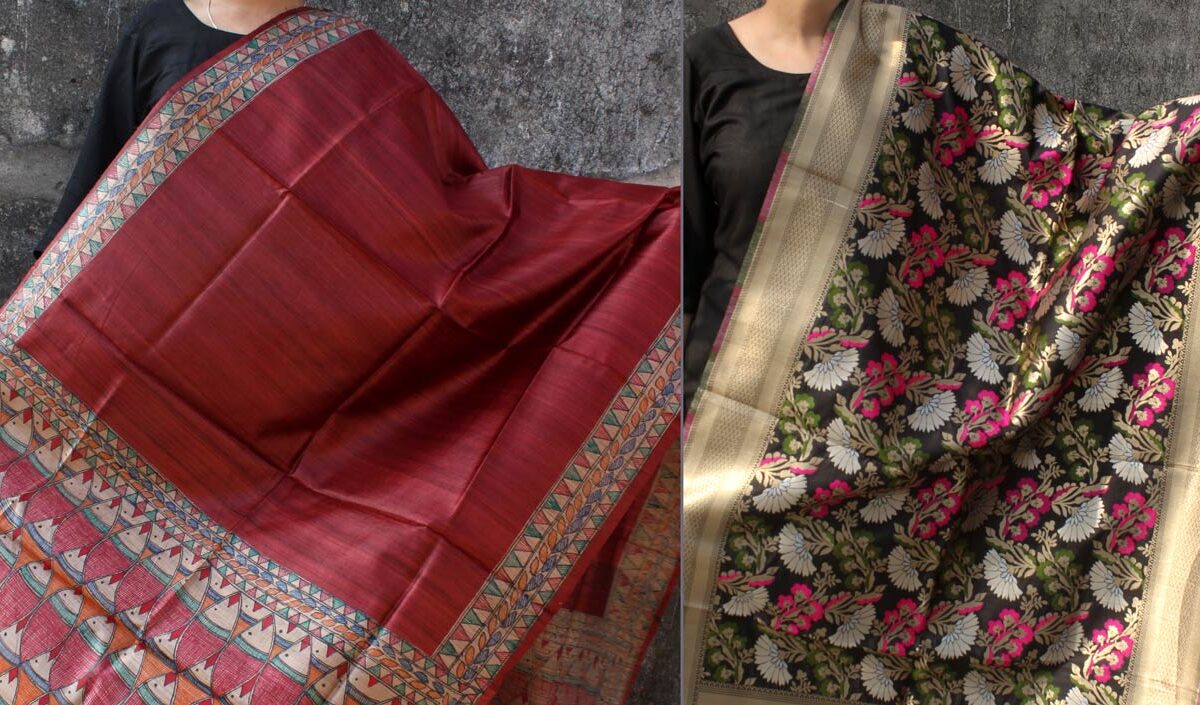History of Shawl/dupatta/odhani, in India, dates back to Indus valley civilization when both Men’s and women’s clothing consisted of two parts of unstitched fabrics, a draped lower garment, often resembling a dhoti, and possibly a shawl around shoulder.
In Vedic age, clothing mostly consisted of a single piece of cloth slung over one shoulder and wrapped around the entire body. People wore “paridhana”, an undergarment with pleats in the front called “mekhla”, and an upper garment called “uttriya”.(1)
As time progressed, dupatta became symbol of modesty for women in India that were used both to veil the face and to cover the head and shoulders.
Even in current period, dupatta is widely used by Indian women sometimes still serving usual purpose of veil, sometimes as part of dressing, wrapped around neck and shoulder and many times simply as “clothing accessory.
Being one of most important clothing-accessory, in Indian outfit, its available in wide variety of material, designs and sizes. Times have changed but this piece of clothing has not lost its charm.
Mail: contact@shilphaat.com
